St. Joseph's Health in Paterson, New Jersey, has formed a partnership with the U.S. Department of Homeland Security to identify victims of human trafficking and protect exploited persons.
With inspiration and support from the department's Blue Campaign and other sources, St. Joseph's will train more than 400 emergency clinicians and staff before expanding to other areas of the hospital that are likely to interact with victims of human trafficking.
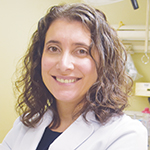
"It's a wonderful project," says Dr. Marjory Langer, chief of emergency services at St. Joseph's Wayne campus. "Every day we wonder how many of these people we can help that come through our doors that we haven't recognized."
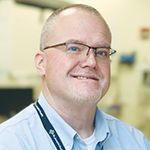
The scope of trafficking
Human trafficking involves the use of force or fraud to obtain some type of labor or commercial sex act. Polaris, which connects
victims and survivors of human trafficking to support and services in North America, estimates that 28 million people were victims of human trafficking worldwide in 2022 and that about 68% have contact with emergency departments.
"So, statistically, we've all had contact with patients who have been victims," says Brian Dolan, director of the emergency departments at St. Joseph's in Paterson and Wayne, both in northern New Jersey.
DHS told St. Joseph's that victims in southern New Jersey report more sex trafficking, while victims in northern New Jersey report more labor trafficking. The first challenge is identifying victims or getting them to report abuse.
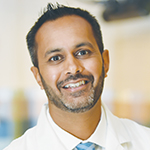
"We really can't estimate the number we see because it's been so underreported and it's such a sensitive issue," says Dr. Nilesh Patel, chair of St. Joseph's emergency services in Wayne and Paterson. "We know that it disproportionately affects the population we see: the underserved, potentially homeless patients. So we're in a ripe area to identify victims."
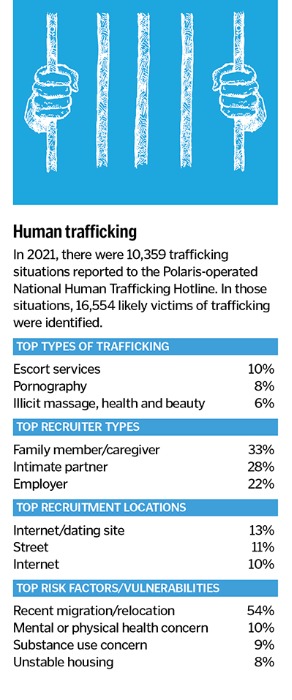
Grassroots impetus
St. Joseph's gathered a wealth of state and national resources, thanks to a grassroots effort of emergency room nurses in the emergency department at Wayne. In June, nurses Veronica O'Dell and Dawn Simard started
research into human trafficking as part of St. Joseph's RN STARS Program, which promotes professional development for direct care nurses.
"I think part of the success is that this is a nurse-driven protocol with a lot of support," Simard says. "It emulates the Magnet aspect of the hospitals that we work for and shows that nurses are held in a high regard and want to be the change."
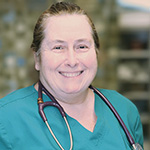
Magnet recognition is an honor given to nurses who show a commitment to excellence.
O'Dell and Simard gathered resources — including data and material from the Blue Campaign and Polaris — and received training from the New Jersey Coalition Against Human Trafficking. The Blue Campaign is designed to raise public awareness about human trafficking by working with organizations and making awareness-raising resources available to educate the public.
Through their research, O'Dell and Simard developed a three-step program: a survey for all emergency department workers to gauge their knowledge of human trafficking, a training session to identify trafficking victims and a post-training survey/assessment.
"The training they receive from us is what to look for when you triage, what to look for when you go through someone's chart, the red flags we're looking for and what our safety protocols are after that," O'Dell says.
Dolan says that the entire emergency department staff at Wayne has been trained and that O'Dell and Simard trained some of their fellow RNs at Paterson.
"Even after handing out the pre-assessments, we already had staff wanting more information," says Carlin Keil, one of the nurses training her colleagues at Paterson. "It's sparking interest even before education."
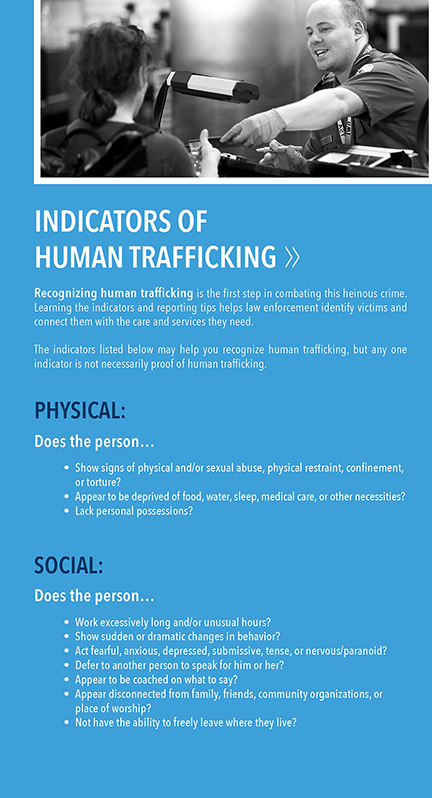
A brochure produced by the Department of Homeland Security as part of its anti-human trafficking Blue Campaign offers tips on indicators that someone is being trafficked. The brochure is among the library of materials available for download at dhs.gov/blue-campaign.
Following the emergency departments, St. Joseph's will train staff in outpatient surgery and labor and delivery.
"Ultimately our plan is to have everyone in the institution knowledgeable about human trafficking, since victims are not likely to have a primary doctor," Simard says. "Then it will spread through the organization. We want everyone to be able to assess and every corner of our facility to be a place where a patient can feel safe and get information about human trafficking. So, ultimately, that will include everybody."
In the meantime, St. Joseph's has leaned heavily on the resources from the Blue Campaign, all provided free. The hospital ordered handouts, posters and pamphlets in English and Spanish. All include the national hotline number, 1-888-373-7888. St. Joseph's also has handed out first responder identifier cards and key tag cards for staff that list signs of human trafficking and how to report it.
Brandi Bynum, section chief of the Blue Campaign, praised St. Joseph's as "one of first hospital systems to join the campaign and work with our local office to train hospital staff on how to recognize and respond to potential victims of human trafficking."
A waiting game
Despite the wealth of resources, St. Joseph's Blue Campaign is a leap of faith. Whether the information effectively reaches those who need it most or causes them to take action is tough to measure because of
the nature of human trafficking.

"One of the biggest challenges is that many victims don't know they are victims," says Melissa Cramer, ED day shift manager at Wayne. "They are brought into trafficking by coercion. It could be a family member, significant other or sponsor. They think these are people who care about them and want to help them. Even if they do acknowledge being trafficked, it's hard to ask for help. They don't know how to get out, or maybe their families are being threatened. So, the number of people who know they are being trafficked and ask for help is really low."
With few measurable outcomes to gauge success, Dolan says, "The biggest thing is to get the awareness out there, that patients know that they are safe and they have the ability to get help regardless of where they are."
He adds: "We want to make everyone aware, not just at St. Joseph's but in health care in general. Whether you're following what we're doing here at St. Joseph's or any other program, the idea is just to provide a feeling of safety for the patient to declare themselves a victim, whatever time or whatever facility."
